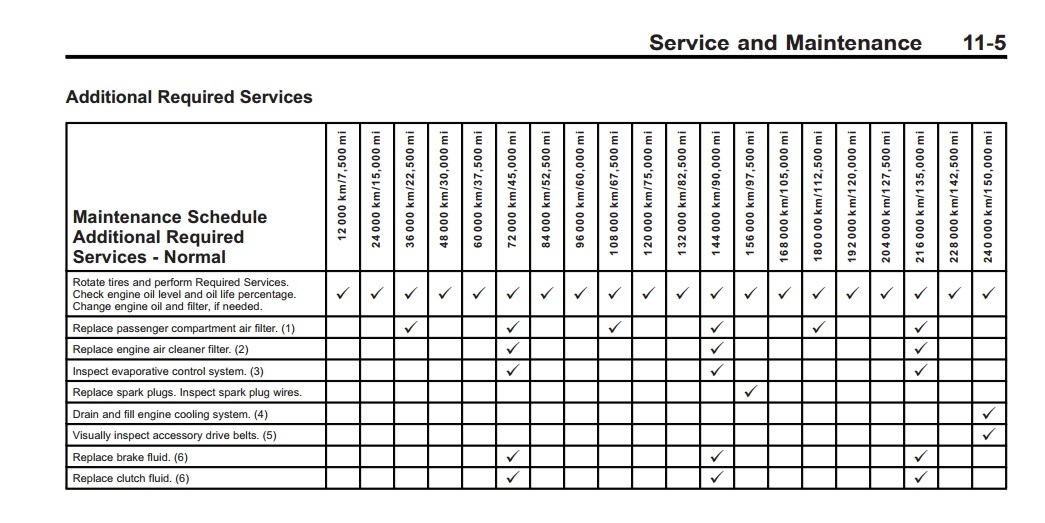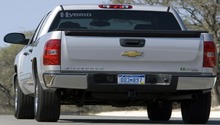Chevrolet Silverado 2014-Present: Towing and Hauling General Specification
The Chevy Silverado 1500 is a beast of a truck. If you don't tow and haul with it, you're not using it to its full potential. Here are some important things to know before towing.
This article applies to the Chevrolet Silverado 1500 (2014-present).
Chevrolet Silverado 1500s are made to haul loads and tow things, and that's one of the main reasons why people buy them. Unless you just like the way they look, of course. Chances are, if you own a Chevy Silverado, at some point you are going to haul or tow something. The flexibility and utility of these trucks is what has made them so popular, and it's also why manufacturers constantly try to one up each other in regards to towing capacity. But there are some important things you need to know before you hook up that trailer or dump that heavy load in the bed. Below we've got everything you need to know before you tow.
Scheduled Maintenance
If you tow a trailer or haul heavy loads frequently, you fall into the domain of what vehicle manufacturers like to call "special operating conditions," which means that your truck will require maintenance more frequently. In some cases, this also means additional maintenance steps. If you only tow or haul a load every once in a while, this is not the case. Driving under special operating conditions means that you will be changing your oil, rotating tires, greasing axles, checking for wear on various components, and changing other things like transmission and transfer case fluid more frequently. You can find your vehicle specific information in your owner's manual or at Chevrolet's website.

What to Know Before You Tow
Hopefully, before you bought your truck, you took into consideration the weight you need to haul or tow. There are many combinations of vehicle make and model with many different towing and hauling capacities. It's not a good idea to exceed the manufacturer's listed capacities or skimp out on scheduled maintenance, as damage to the vehicle is likely to occur. Chevy recommends using a trailer that has a separate braking system, as this gives you more control and puts less stress on the vehicle's brakes. Make sure the trailer is equipped with working lights that meet DOT regulations and that proper wiring is used. Always check to make sure the lights are operational before heading out on the road. Always use safety chains to prevent the tongue from contacting the ground in the event the trailer is separated from the hitch.

Specifications and Towing Capacity
Your truck's towing and hauling capacity will vary greatly depending on what engine, axle ratio, cab, and drive your truck has. For example, a 2015 Silverado 1500 2WD regular cab with a 4.3 liter V6 has a maximum towing capacity of 5,900 pounds, while the same truck in a double cab configuration with the 6.2 liter V8 will tow up to 12,000 pounds. Even little things like having a long bed vs. having a short bed can mean up to 1,000 pounds difference in towing capacity. Be sure and check your model's specs before loading it up.

Common Questions
What is towing capacity?
Towing capacity is the weight of the trailer you can pull behind your vehicle without causing damage to the truck's engine, transmission, cooling system, and frame.
What is gross vehicle weight?
Gross vehicle weight is how much your vehicle weighs minus any cargo.
What is a payload rating?
Payload rating indicates how much weight you can put in the bed of the truck before it starts to get too close to the rear tires.
What is anti-sway control?
Anti-sway control is a part of the stability control system that uses electronic sensors to determine if a trailer is swaying, and then applies brake pressure on one wheel to bring it in line.
What is integrated trailer brake control?
This is an advanced system that controls the brakes on both the vehicle and the trailer when you apply them to enhance control and stability.
Related Discussions
- What is My Max Towing Capacity - ChevroletForum.com
- Towing with the Z71 Package - ChevroletForum.com






